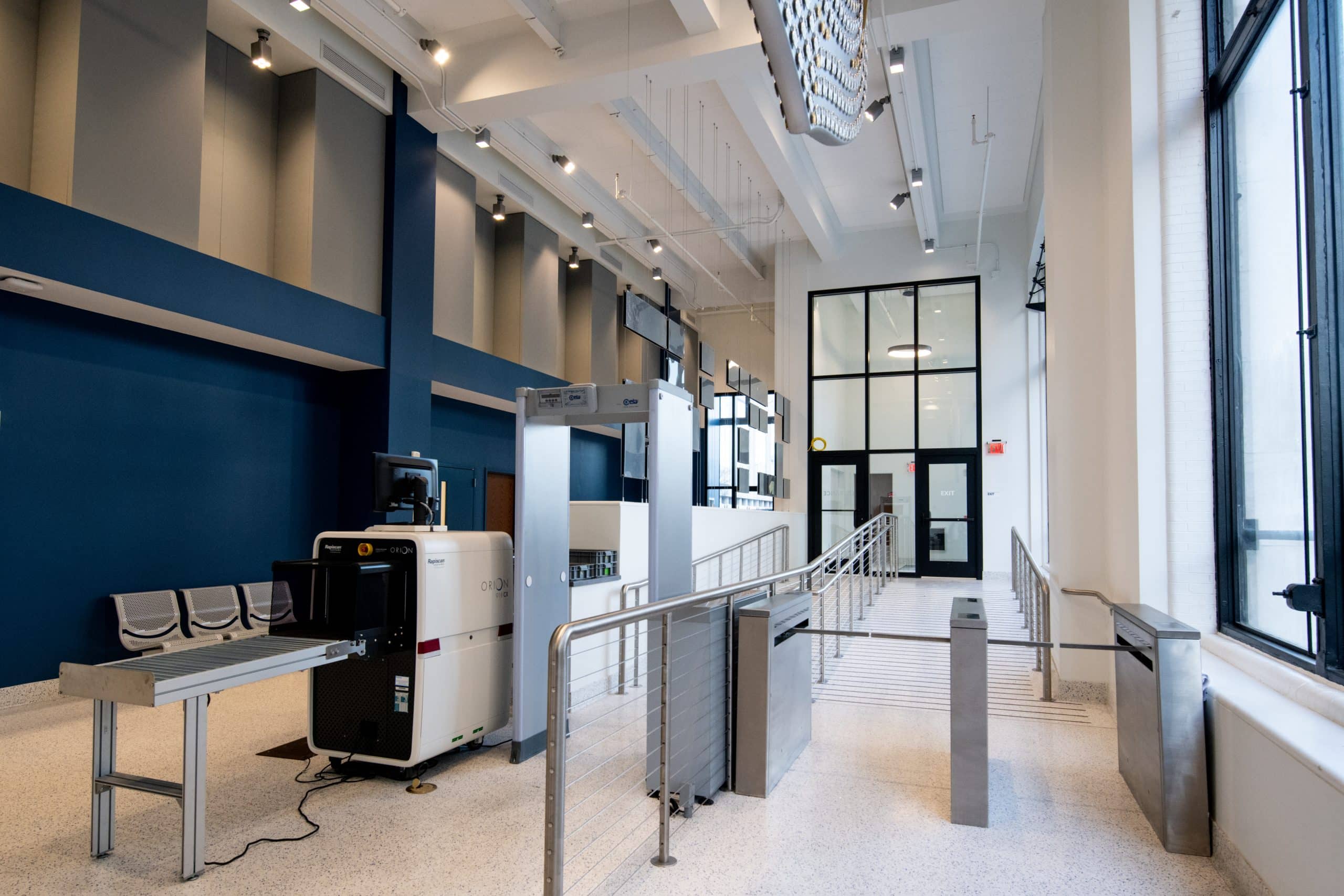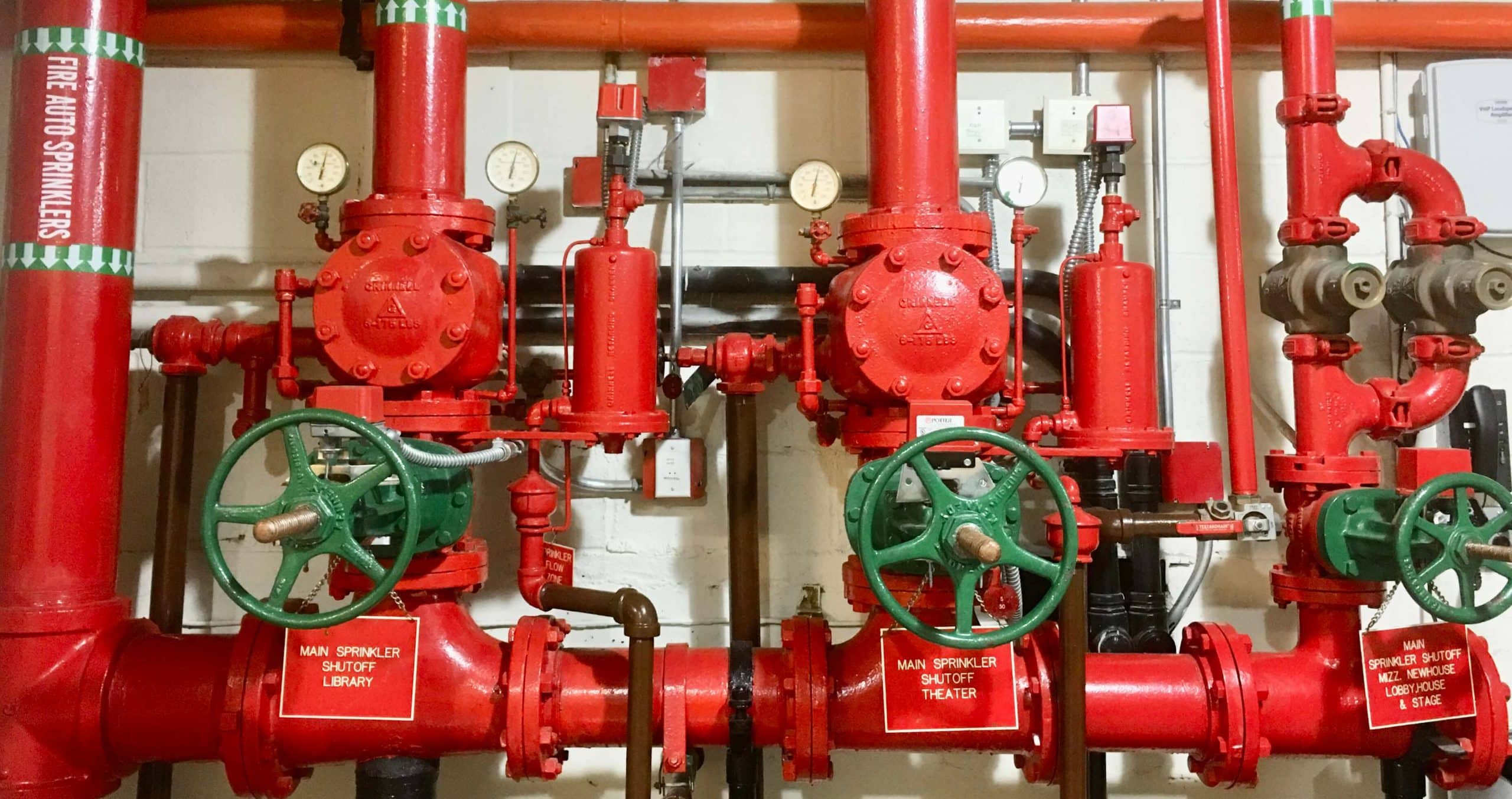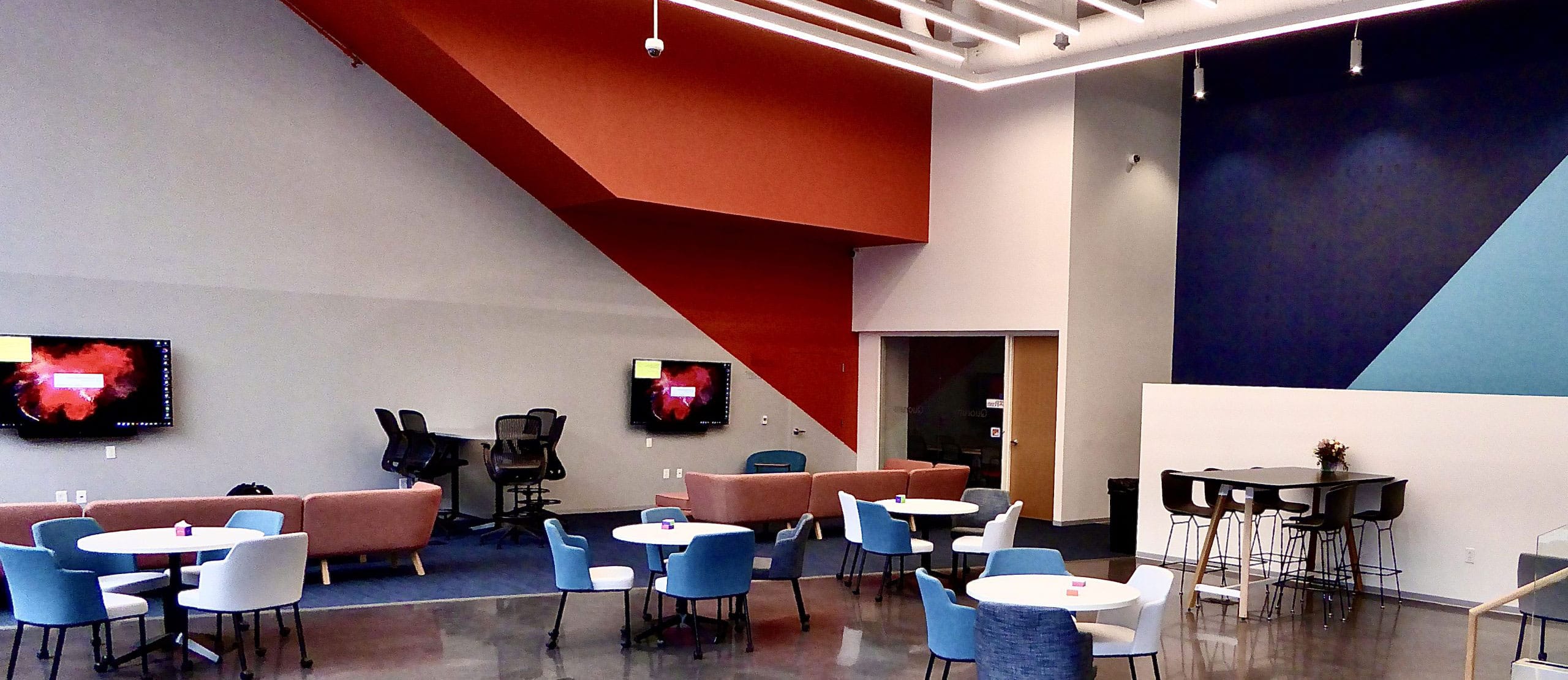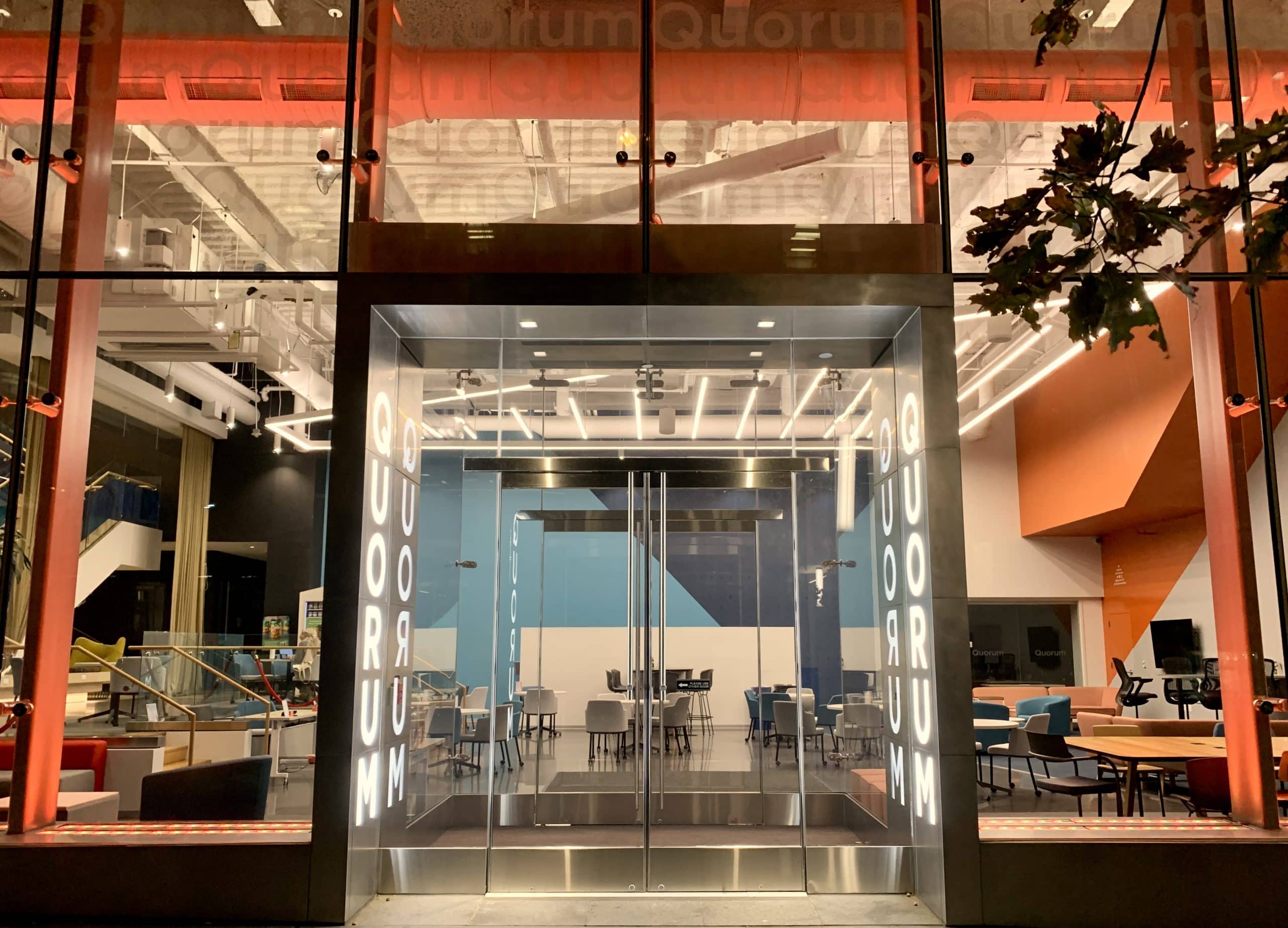Digital video has saturated the new A/V system market and soon the analog sunset will force the few remaining TVs and projectors into permanent retirement. There are a few analog components—microphones, projector lenses, and speakers—which will remain for the foreseeable future, but
generally any audio and video system moving forward will be digital. Since everything is now bits of data moving from source to playback device and even back to the source device (for copyright protection), where does the network reside that carries this data? It is interesting how commercial
A/V presentation spaces are one of the few technology areas that have been slow to fully commit to IP technology.
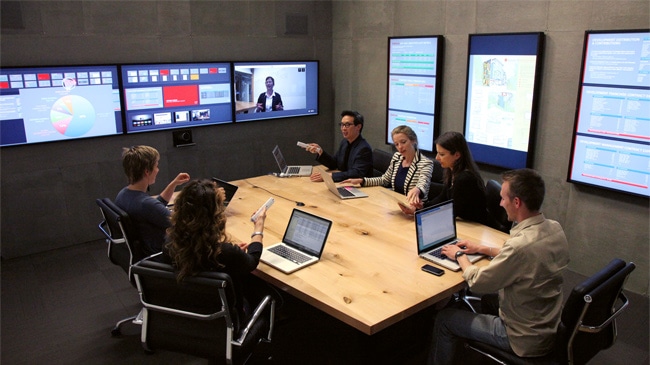
The Internet is quickly becoming the media source of choice of the average media consumer whether it is iTunes, Hulu, YouTube, Spotify, or some other private branded video/audio streaming service. Consumers have generally stopped buying physical media so there is less need for the physical media source component. This is a very clear trend in the music industry, but has also been a long time concern of the movie and TV industry. Data networks are now viable at the largest scale of media distribution through the proliferation of Internet-based video/music on-demand services; a far cry from even ten years ago.
Yet network streamed media has moved slowly into the small-scale presentation space. The following are a few examples of the current attempts to introduce networking for A/V systems:
HD BaseT (HDBT) is the latest alternative to cabling standards like DVI, HDMI, Thunderbolt, and Lightning.
The HD BaseT standard uses common Cat6 cable and RJ45 data jacks, but is not compliant to our common understanding of network standards. HD BaseT is a means for directly connecting A/V devices. Just like HDMI, HD BaseT allows both audio and video to be combined in one single cable, HD BaseT’s main advantage is allowing cable lengths up to 100 meters (328 feet). HD BaseT also adds a PoE-like power source, a separate 100M Ethernet connection, and allows the passing of remote control protocol such as CEC and RS232 between devices.
While HD BaseT offers an Ethernet component, it is still not an A/V networking system. It will reduce the number of cables needed in an A/V system, but will still require the very traditional source – A/V switch-display system topology.
While the reduction of cables lends itself to building larger A/V systems, the current offerings are hit-and-miss for the small presentation market unless long cable runs are required. It is essentially a uniform Cat6 wiring replacement technology with switching by traditional switching having “decoding” front-ends while providing a network path as well.
WiDi/WHDI/Wireless HD and other related wireless display products take advantage of the proliferation of WiFi in portable devices and A/V components to provide a means to connect a source and display. The goal is to move toward wireless A/V systems. These systems are similar to HD BaseT in that they are a means for replacing HDMI or DVI cables, but with a wireless link. Currently, these systems use point-to-point WiFi links so switching between multiple sources is not included. Most current applications allow for simple screen mirroring/sharing but do not include source-switching features. Some of these systems may limit the use of a source device’s simultaneous access to the Internet and may require a series of random generated passkeys, accessing hidden panels in apps for syncing, special
costly boxes, or simple passcodes. In general, these offerings have yet to be organized and remain the domain of the tech enthusiast
The professional boxes that don’t require such challenges cost between $1,500 and $3,500 to start but provide “instant connectivity.” All these devices will become ”natively linked” within common display devices.
AirPlay and Chromecast are proprietary wireless display systems created by Apple and Google, respectively. These are unique in their use of Internet video streaming for local devices. In both cases, they allow streaming from a computer or portable device to their dedicated receiver devices and also allow for the redirection of web /cloud based media to their receiver devices. Your portable device/computer acts as a remote control for selecting and queuing media.
Currently, both systems are limited to using a single control point.
AirPlay’s only video capable device is currently the Apple TV. Apple also requires the use of the iTunes video store and another Apple device as the source/controller by using a simple passcode sync. However, a personal hotspot may be created between devices, allowing simple wireless command operations on a very stable operating system with unique capabilities not found in other OS’s or applications.
PSE’s integrated Network and Audio/Visual Engineers provide assessment, planning, design, and implementation consulting. Contact our Technology Director, Mike Michalski, at 800-839-5060 x105 for more details.
Chromecast by Google is a receiver device and app that will run on Android, Apple, and Windows devices. Chromecast works with most online media services which are accessible via their desktop or mobile browsers. Users have experienced great connectivity, but also odd techno-glitches.
Unfortunately, while the acceptance of these devices for consumer use is high, the device setup process and a lack of presentation applications have kept these out of the mainstream commercial market. With over 13.5 million Apple TVs sold it is fair to say that even the 250,000 users, give or take, who use it in a wireless fashion share a corporate tech guru status.
AVB, or Audio Visual Bridging, is a network standard that supports the use of IP networks as the transport signal. Currently, AVB has been implemented mostly in large-scale audio systems and automotive entertainment systems. While AVB is an accepted network standard, it does not address the format of video inputs, video switching, and control aspects of A/V presentation spaces; at least not yet.
HD/IP or HD over IP, is a competing IP-based systems video transport to AVB which employs encoders and decoders and simplified dedicated networks. HD/IP currently relies on managed switches which have been manufacturer tested for their system. HD/IP systems have offered some switching capability either through controlling VLAN assignments or multicast streaming subscription protocols.
Moving Forward – – – Fast
These examples illustrate how the convergence of A/V systems and data networks continue to move forward slowly. While web-based media has matured greatly and is becoming very dominant in the consumer market, commercial A/V systems have made smaller strides in terms of network connectivity for presentation displays. Currently available technology has had little impact on the tried and true source–A/V matrix-display system topology. While a small, high-tech, simple solution is possible, a well-integrated A/V presentation system with multi-inputs still relies on more advanced I/O friendly matrix electronic switches as its core. It is an even more interesting contrast to note that IP networks have completely changed the control system side of A/V systems. While network attached displays are widely used in digital signage such as mini-Macs driving scores of flight display monitors at airports, they are almost nonexistent for presentation spaces.
Successfully completing a future-ready and relevant A/V control system that includes IP connectivity, real-time, and on-demand programming while incorporating an infrastructure takes a qualified engineering team. The next five years will incorporate a slew of technical improvements to gear, apps with embedded integration, WiFi communication with more stable protocols, and image and sound manipulation that will put our notion of PowerPoint in the grave.

